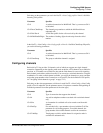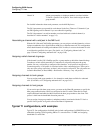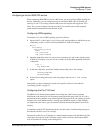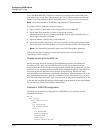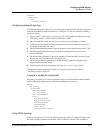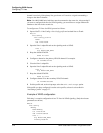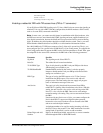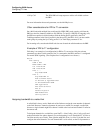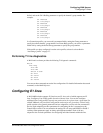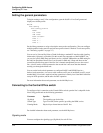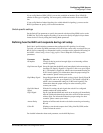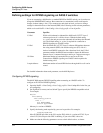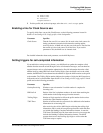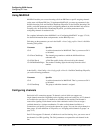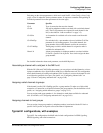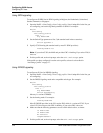
Configuring WAN Access
Configuring E1 lines
MAX 6000/3000 Network Configuration Guide 3-19
Nailed, and set the Ch N Prt/Grp parameter to specify the channel’s group number. For
example:
Ch 1=Nailed
Ch 1 Prt/Grp=3
Ch 2=Nailed
Ch 2 Prt/Grp=3
Ch 3=Nailed
Ch 3 Prt/Grp=3
Ch 4=Nailed
Ch 4 Prt/Grp=3
Ch 5=Nailed
Ch 5 Prt/Grp=3
In a Connection profile, you can use this permanent link by setting the Group parameter to
specify the nailed channels’ group number. In a Frame Relay profile, you can use a permanent
nailed link by setting the Nailed Group parameter to specify the group number.
If the profile you have configured is not the active profile, activate it as described in
“Activating a profile” on page 2-7.
Performing T1 line diagnostics
A MAX unit’s software provides the following T1 diagnostic commands:
Net/T1
Line Diag
Line LB1
Line LB2
Switch D Chan
Clr Err1
Clr Perf1
Clr Err2
Clr Perf2
You can use these commands to test the line configuration. For detailed information about each
command, see the MAX Reference.
Configuring E1 lines
A MAX 6000 unit that supports E1 lines has two E1 slots, each of which supports two E1
lines. Configure a Line Config profile for each of the two slots. You can also configure
additional Line Config profiles, but only one can be active for a given slot at a given time. For
a MAX 3000 unit, only one Line Config profile can be active at a given time. A Line Config
profile contains a few general parameters and two subprofiles, one for each line connected to
the slot. Each subprofile provides parameters for configuring the line’s connection to the
Central Office switch. You can customize the settings for call setup and DPNSS or DASS 2
switches. Other parameters apply to timing and telephone numbers. Each of the two
subprofiles also includes parameters for configuring individual channels within the line.



